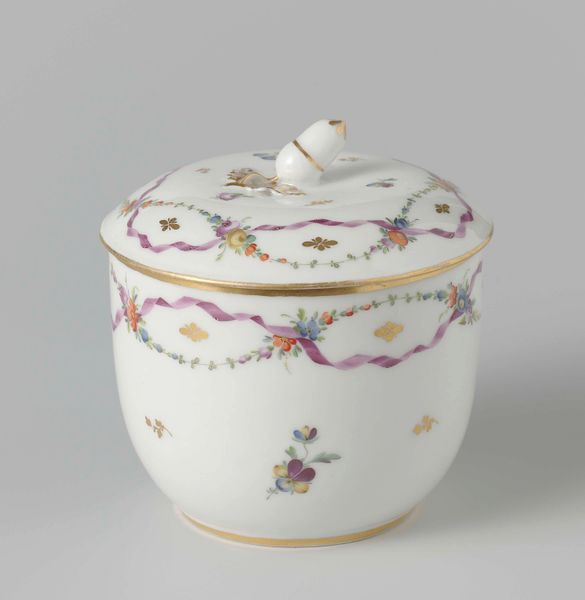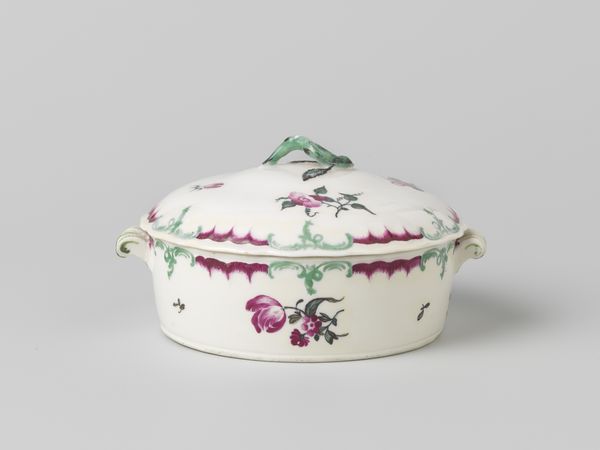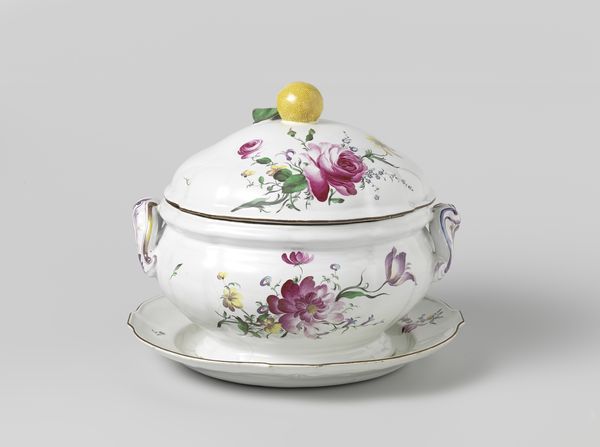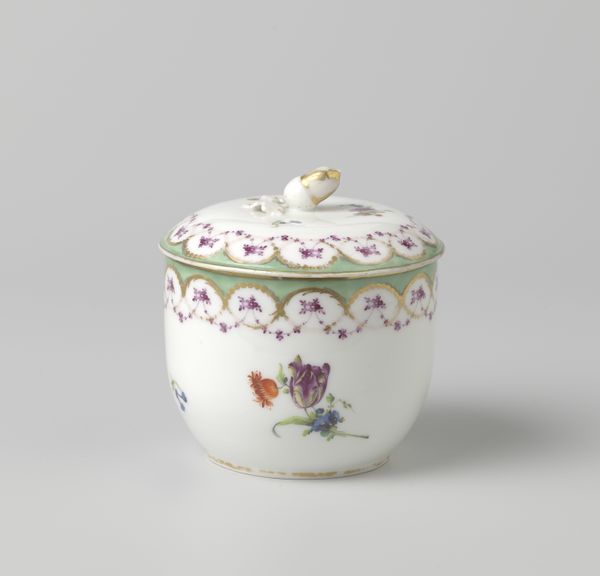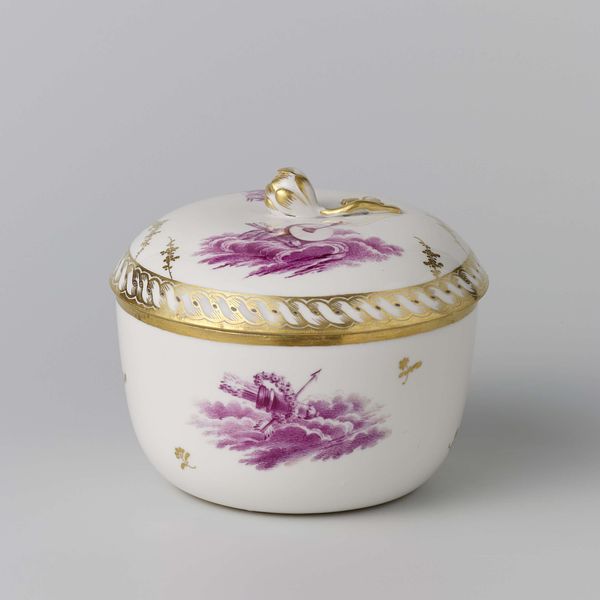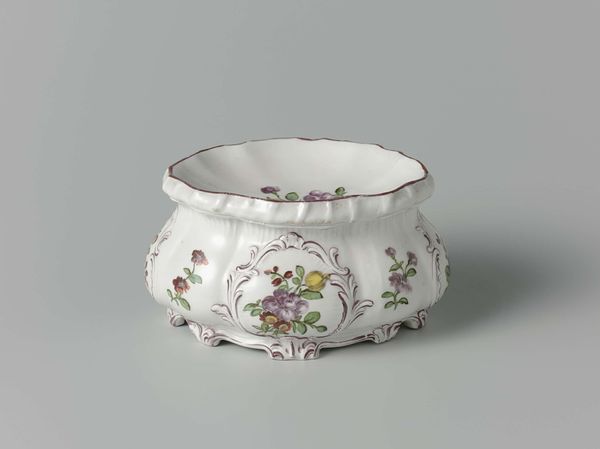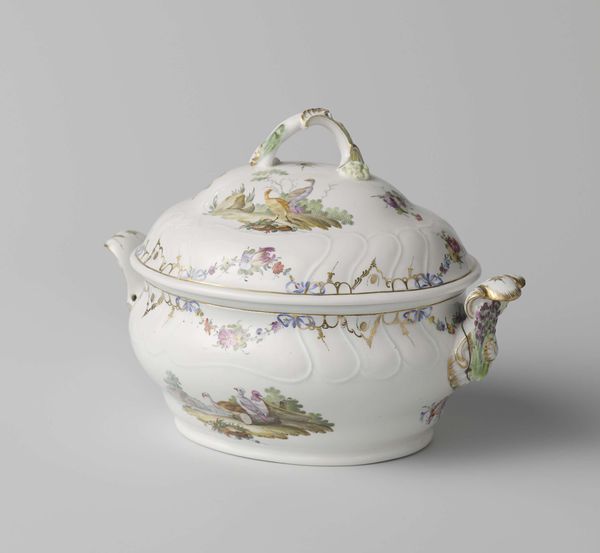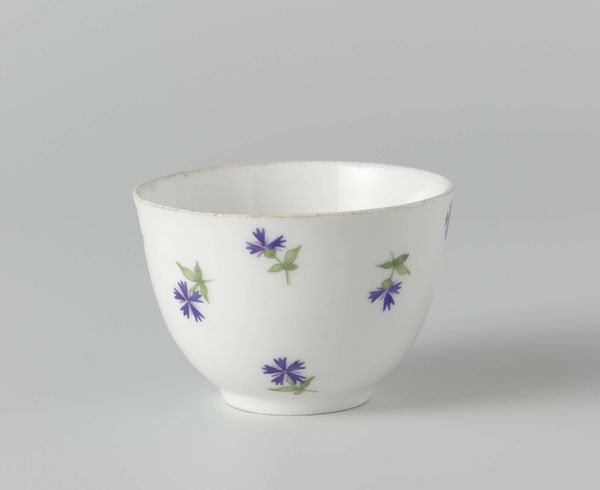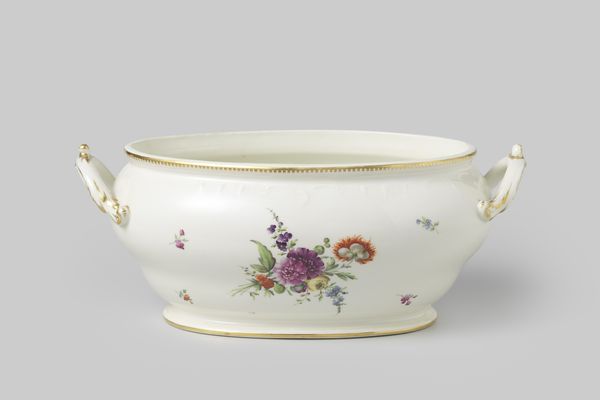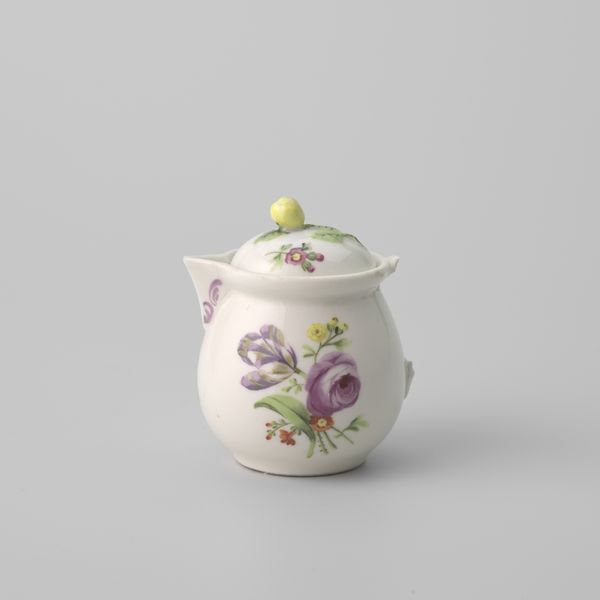
Dimensions: height 5.5 cm, diameter 8.2 cm, height 8.2 cm, height 3 cm, diameter 8.5 cm
Copyright: Rijks Museum: Open Domain
Curator: Here we have a delightful sugar bowl with lid, made of earthenware around 1784 in the Loosdrecht factory. It’s adorned with hand-painted cornflowers. Editor: It gives off a peaceful, almost naïve sensibility. The soft, curved shape and the gentle sprinkling of blue flowers against the white are surprisingly affecting, given its simple construction. Curator: The overall composition strikes me as balanced. Notice how the floral patterns, almost symmetrically arranged, offer both regularity and a degree of freedom. It is a wonderful exercise in pattern and form. The rounded shape is quite classical, lending it a certain groundedness despite the dainty flowers. Editor: Blue cornflowers were indeed deeply symbolic in that period, often representing hope and sometimes resistance, especially in contexts of political and social change. Its placement upon a sugar bowl designed for sweetening could almost ironically challenge social structures of consumption in a quiet, domestic way. Curator: An interesting interpretation. Although, in observing the interplay of the material and style, I must posit this Rococo piece blends form with functionality; the texture of the earthenware invites the user's touch, the subtle gradations in white contributing to the object's tactile quality. Editor: Indeed. Perhaps it serves as an invitation. Sugar sweetened not just tea but also lives, with the symbolic presence of cornflowers encouraging us towards brighter thoughts even in the mundane. Curator: Ultimately, an intimate artifact offering a momentary glimpse into a bygone aesthetic. Editor: A beautiful illustration, no matter the angle. A reminder to seek nuance in the everyday.
Comments
No comments
Be the first to comment and join the conversation on the ultimate creative platform.
